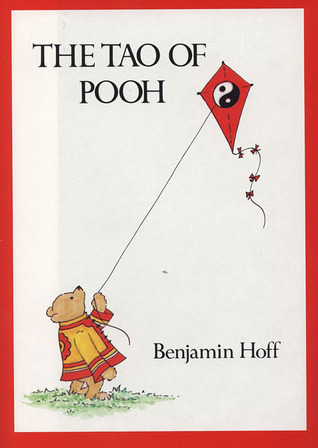Chapter 3: The Tao of Who?
byChapter 3: The Tao of Who? Pooh shares with Hoff that he has learned about Taoist concepts from his ancestors, like the poet “Li Pooh” and the painter “Pooh Tao-tse.” Hoff gently corrects him, noting that the real names are Wu Tao-tse and Li Po. In the Taoist tradition, a central concept is P’u, which means “the Uncarved Block.” Unlike abstract ideas, Taoists prefer to explain such concepts through real-world examples, making them more tangible. P’u represents the natural, unaltered state of things, where their power lies in their simplicity. Taoists believe that when things are manipulated or changed, they lose that inherent strength. The two Chinese characters for P’u translate to “tree in a thicket” or “wood not cut,” underscoring the essence of being in one’s natural, untouched form. In English, this is often referred to as the “Uncarved Block.”
Pooh is a perfect embodiment of P’u. His simplicity and natural state are evident throughout his adventures. For instance, in one of the stories, Pooh struggles to tell his left paw from his right. Yet, this simplemindedness is actually his strength. In Taoism, simplicity doesn’t equate to ignorance. Instead, it reflects a state of calm and reflection. Pooh’s simplicity is not a flaw, but a virtue that makes him a hero in his own world. His ability to remain content and unperturbed by life’s complexities allows him to live peacefully, making him the Taoist figure in the Winnie-the-Pooh stories.
In another episode, Rabbit tries to guide Pooh and Piglet home, but they repeatedly end up in the same sand pit. Pooh, with his simple wisdom, suggests Rabbit try searching for the pit, reasoning that he might eventually find his way. Rabbit, though initially dismissive of Pooh’s suggestion, reluctantly agrees and disappears. With Rabbit gone, Pooh listens to the sound of his honey pots, leading him and Piglet back home. Hoff explains that Pooh’s simplicity outshines Rabbit’s cleverness, as Pooh’s actions come from an intuitive, harmonious place, while Rabbit’s approach is more rigid and logical. This contrast emphasizes how Taoism values the natural flow of simplicity over cleverness or intellectual complexity.
Pooh’s interactions with others, particularly Eeyore, further illustrate the Taoist concept of simplicity. Eeyore’s constant complaining and negative outlook prevent him from experiencing happiness or success. When Eeyore looks at his reflection in the stream and calls himself pathetic, Pooh inquires about his mood, to which Eeyore responds that nothing matters. Eeyore’s pessimism, though at times darkly humorous, highlights how negativity can hinder one’s ability to live joyfully. In another example, Pooh and Piglet visit Eeyore’s house after a storm, only to hear Eeyore complain that no one cares enough to push over his house. Eeyore’s constant dissatisfaction shows that negativity blocks the flow of positive energy that Taoism seeks to cultivate.
Hoff reiterates that Pooh is lovable precisely because of his simplicity. When asked to explain P’u, Pooh humorously insists that he didn’t do it, instead blaming Piglet, then Rabbit, who also claims no knowledge of the Uncarved Block. Both Pooh and Piglet admit they don’t understand what it is, yet they embody it in their carefree, unburdened lives. Hoff points out that Pooh, as the Uncarved Block, cannot explain P’u in words because it is not something to be understood intellectually. It is a state of being, not a concept to be dissected. Pooh simply “is” the Uncarved Block, existing in a natural and harmonious state that doesn’t require explanation.
Through Pooh’s example, Hoff reveals a profound Taoist secret: life is meant to be fun. Pooh and Piglet’s enjoyment in their simple activities, such as checking on Eeyore’s house or wishing Rabbit “a Very Happy Thursday,” exemplifies the joy found in embracing life’s simplicity. Taoism teaches that by living in the moment, free from excessive worry or overcomplication, we can enjoy the world more fully. The state of P’u allows for spontaneous actions that work out in harmony with the universe. When people let go of the need to control every aspect of their lives, they often find that things fall into place naturally. By embracing the simplicity of life, people can experience more joy and fulfillment.
This chapter reflects how Taoism, through characters like Pooh, teaches that simplicity is not a limitation but a strength. The more we strip away complexity and allow things to be as they are, the more connected we become with the natural flow of life. Like Pooh, we can learn to enjoy the little things, find peace in simplicity, and trust that the universe will guide us. Taoism’s message is clear: life doesn’t need to be complicated to be fulfilling. By living with ease, balance, and an open heart, we align ourselves with the Tao, allowing life to unfold in its own perfect way.

